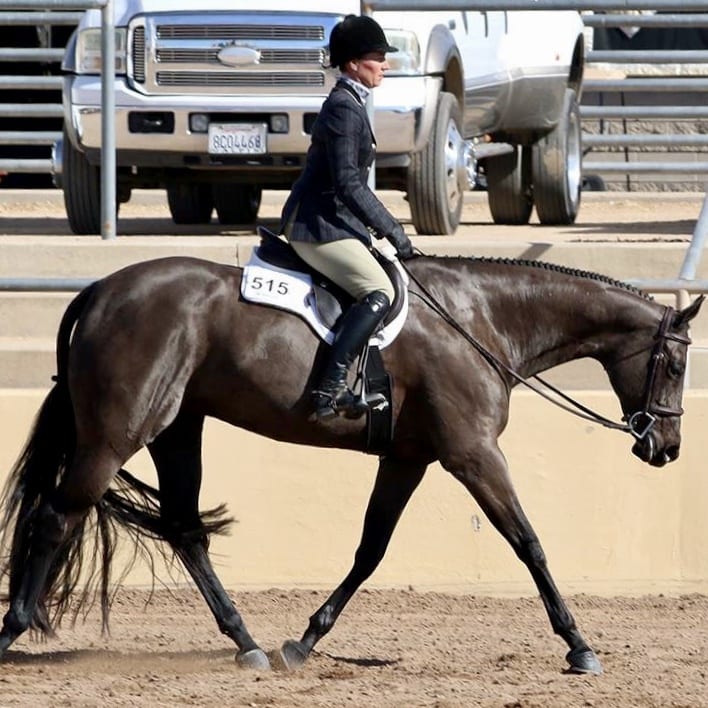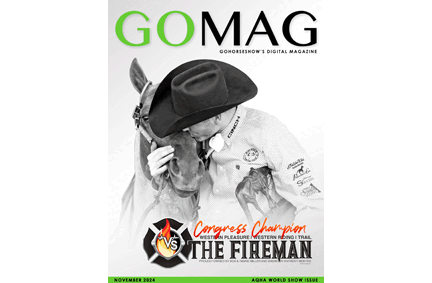We’ve all seen that hunter horse that trots into the pen with athleticism and grace, whose canter is fluid and soft, but strong and cadenced. They possess the qualities, as outlined in the rulebook, for an ideal hunter under saddle horse. They have extended floaty trots, canters that cover ground and have a bright, alert expression.
But what are some of the unwritten rules of hunter under saddle that you won’t find in the rulebook? How can you elevate your performance and take your next trip around the pen to the next level?
We spoke to two of the best in the hunter under saddle industry, Missy Thyfault from Shelby, OH and Farley McLendon from Whitesboro, TX to come up with the five unwritten rules of hunter under saddle to keep in mind the next time you trot into the pen.
1. Details matter
A proper, well-turned-out look is always an unwritten rule no matter what class you show. But since hunter under saddle traditionally has had a classic style, the details are really important – even down to the bit and curb chain. “If you poll some judges, they will predominantly say they prefer the look of a snaffle in a hunt seat horse, either a D or full cheek. Kimberwick bits are a no-no. If a curb chain is needed, make it a clean look.” Missy told us. However, never compromise a look for safety or performance. Missy reminds us, “First and foremost, ride in what will get you shown the best, no matter what the preference may be. Because without a good ride, none of that matters.”
2. Size matters too…sometimes
Missy told us that the size of a horse does matter in this class. But, that comes with a caveat. She said, “I think a certain size is necessary and the overall aesthetic needs to be balanced and pleasing to the eye. I think quality of movement in a good-legged horse will win over an average mover with size every time.” While a horse with some size does make the overall hunter picture attractive, you shouldn’t compromise size for quality of movement. Missy puts it as, “The competition is so tough and our judges will find the best legged horse no matter if it’s not the tallest one out there.”
3. Get seen
As with any class that has multiple horses, it can be difficult to get your fair look on the rail. Many horses and riders can look alike as everyone is dressed similarly and, since everyone shows off the rail, you can easily get covered up. Having a strategy to get seen is crucial. Because you are not tied to the rail, you have the ability to maneuver around the pen slightly easier than, say, a pleasure class. If a bunch of horses are stacked up, go tight into your corner to give them some time to pass and let the rail clear out. Farley told us, “Use your corners by going deeper and coming out collected and ready to show your horse on the straight rail.”
4. Make the most of the trot in
Everyone knows a first impression is crucial in every discipline, whether you are standing at the cone or entering the arena. Usually, in a hunter under saddle class, you enter at a trot which gives you some alone time on the rail. Even though technically the judges aren’t officially judging yet, they are still forming their opinions. Make sure you enter with a confident look and that you are showing off your horse. Farley shared her strategy, “I always try to be one of the first four in the pen on a trot in. This gives a good impression and allows you a “mini” warm up while the judges are writing down numbers and getting their first impressions of everyone else. This will also help you with #5 below – to get in and get a good rhythm going.”
5. Transitions, pace & rhythm are important
As with any rail class, an exhibitor’s transitions, pace and consistent performance are key to being successful in the hunter under saddle. Some exhibitors make the mistake of showing too fast at the trot and too slow at the canter. Practice and make sure you can feel the pace your horse looks best at. Farley reminded us that the calls for transitions, as well as when you switch directions, can help to collect your horse, get your rhythm back and adjust your rail position. “I will use the turn around to gain space as well as showing on and off the rail throughout the class,” Farley mentioned. Be consistent in your pace, make sure your transitions are soft and controlled and that your rhythm is fluid and has cadence.
About the Author: Julie Hoefling was born and raised in Akron, Michigan but now resides in Cave Creek, Arizona with her husband, Jerry. She works at Central Garden & Pet (Farnam Equine Division) as a Brand Manager over grooming, wound and leather care. Julie shows her horse, Shady Impulse in the Level 1 Amateur Western All-Around events under the guidance of Ryan and Andrea Kail.







